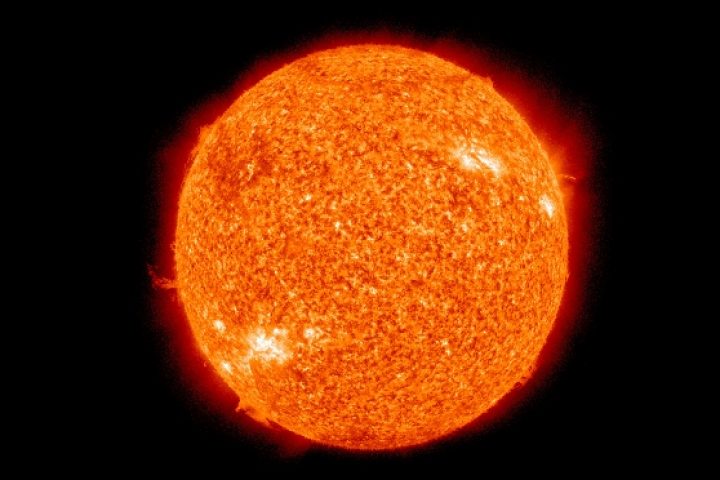The Nuclear Fusion Race
By David Ren 任大偉

Energy sustainability is a key contemporary issue. However, clean, renewable energy options are plagued by low energy density and cost inefficiency, propelling the continuous search for sustainable alternatives. A breakthrough in nuclear fusion offers a new paradigm for the development of renewable energy. Much like in the cores of stars, the combination of hydrogen atoms (the most abundant element in the universe) to form helium (an inert gas) yields an enormous quantity of energy. Although there are significant kinks to iron out (to say the least), the first steps in making nuclear fusion a viable method of power generation have undoubtedly been made around the world.
Nuclear fusion essentially involves fusing two nuclei together (generally hydrogen nuclei) to form a larger nucleus. While this process is overtly simple, it requires overcoming the Coulomb repulsion force between the two nuclei so that the nuclear force is able to hold the nuclei together. Thus, equilibrium must be established between the repulsive Coulomb force and the attractive strong force to hold this new nucleus together. For nuclei smaller than nickel-62, the process of nuclear fusion releases energy known as the binding energy [1].
Nickel-62 has the greatest average nuclear binding energy per nucleon than any other atom, meaning it requires the most energy per nucleon to split apart [2]. Lighter atoms tend to fuse towards Nickel-62 because the nuclei involved lose energy with each fusion. Heavier elements absorb energy to fuse as the resultant nuclei possess a greater energy than that of the reactant nuclei.
The problem with nuclear fusion is that sustainable fusion takes place at temperatures beyond 50 million Kelvin, or three times as hot as the sun’s core. The repulsive Coulomb force between protons forces reactors to bring nuclei within together so that the nuclear force overpowers the repulsion. Even in the ideal trajectory, protons zoom at around 20,000,000, corresponding to a temperature of around 16 billion Kelvin. The sun undergoes nuclear fusion at around 15 million Kelvin by trapping many hydrogen nuclei in close proximity. While the average temperature may be lower than necessary, particles that possess higher than the required energy will lead to fusion.
Claims of ‘cold fusion’ in the 1950s have been entirely debunked. Like the name suggests, cold fusion is the idea that nuclear fusion can occur at around room temperature. This fundamental issue created the challenge of plasma confinement. In other words, the ionised gas (plasma) of hydrogen and helium at temperatures above 50 million Kelvin must be reliably contained.
Fortunately, ionised gases are charged particles and can be manipulated by magnetic as well as electric fields. A design that optimises magnetic fields for plasma confinement is the tokamak reactor [3], as used in the ITER experiment in France as well as the Experimental Advanced Superconducting Tokamak (EAST) experiment in China. Assuming that the reactor operates at 100 million Kelvin, deuterium nuclei (2H) has an average velocity of 1,000,000. The plasma at these temperatures is extremely unstable due to severe plasma turbulence.
To provide adequately strong magnetic fields, superconducting cables are laced around the tokamak ring. Without superconducting cables, the magnetic field would be too energy inefficient to operate – but superconductors require cooling to around 4.2 K (or -269 °C), which is also the boiling point of liquid helium. To achieve temperatures in excess of 50 million Kelvin while requiring near-zero temperatures to run alongside plasma is a challenge, to say the least.
Nevertheless, the EAST team has managed to sustain a hydrogen plasma chamber at 50 million Kelvin for over 102 seconds [4]. Germany’s Wendelstein 7-X reactor has also achieved an impressive 80 million Kelvin plasma for 15 seconds.
For researchers dubious of tokamak-based fusion reactors, the Nuclear Ignition Facility (NIF) at the Lawrence Livermore Laboratory uses 192 lasers to combust deuterium-tritium fuel pellets in order to spark fusion [5]. Alternatively, inertial confinement fusion involves ignition of the outer layer of deuterium-tritium fuel so that the resulting explosion causes a chain reaction, burning the remainder of the fuel [6].
Not to be confused with nuclear fission – the splitting of large atoms into smaller ones and an established means of generating power in nuclear power plants – pure nuclear fusion does not release radioactive by-products. This advantage eliminates the problems caused by nuclear waste and the challenges posed by proper disposal. The energy released during nuclear fusion is also three to four times greater than the energy released during nuclear fission, which is the epicentre of its attractiveness in energy development.
While a neat idea, nuclear fusion is a classic example of “easier said than done.” In comparison to sending men to the moon or climbing Mount Everest, nuclear fusion has proven to be the toughest challenge yet, but nations are realising the potential it offers. For now, nature’s very own fusion reactor remains unbeaten and is responsible for providing all energy on Earth.
References
[1] Dr. Rod Nave, Department of Physics and Astronomy. Nuclear Binding Energy (July 2010). Georgia State University. Retrieved from http://hyperphysics.phy-astr.gsu.edu/hbase/nucene/nucbin.html#c1
[2] Fewell, M. P., The atomic nuclide with the highest mean binding energy (1995). American Journal of Physics. Volume 63, Issue 7, pp. 653-658. Retrieved from http://adsabs.harvard.edu/abs/1995AmJPh..63..653F
[3] Kruger, S. E., Schnack, D. D., Sovinec, C. R., Dynamics of the major disruption of a DIII-D plasma (2005). Physics of Plasmas. DOI: 10.1063/1.1873872. Retrieved from http://www.scidac.gov/FES/FES_FusionGrid/pubs/kruger-phys-plasma-2005.pdf
[4] Limer, E., Chinese Fusion Reactor Sustains 90 Million Degree Farenheit Plasma Blast for Over 100 Seconds (February 2016). Retrieved from http://www.popularmechanics.com/technology/infrastructure/a19350/chinese-east-fusion-reaction-sustains-102-second-plasma-blast/
[5] Biello, D., High-Powered Lasers Deliver Fusion Energy Breakthrough (February 2014). Scientific American. Retrieved from http://www.scientificamerican.com/article/high-powered-lasers-deliver-fusion-energy-breakthrough/
[6] Park, H. –S. et al. Phys.Rev.Lett. 112,055001 (2014).